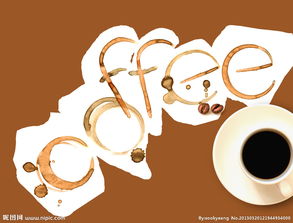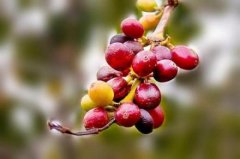What's the difference in caffeine content between white coffee and black coffee?
Many friends like coffee very much, and we all know that coffee contains a lot of caffeine. Do you know the harm of caffeine?

Caffeine is a mild stimulant that contains less caffeine in our daily drinks such as tea, cocoa and chocolate. Caffeine is also found in carbohydrate drinks such as cola and some anesthetics. It can accelerate the metabolism of the human body and keep people clear-headed and sensitive. The refreshing effect of coffee is very popular.
Caffeine can stay inside the body for several hours, and the effect on the body is appropriate for each person. Some people will lose sleep after drinking coffee at night, while others will be nervous and overexcited if they drink too much coffee, but many people will not be affected at all.
Once we understand the body's response to caffeine, we can use it to meet our needs. Drinking a cup of delicious coffee before the exam or long-distance driving will certainly reduce fatigue. The caffeine in coffee is insoluble in cold water, but easily soluble in hot water. It will stimulate the cerebral cortex, eliminate drowsiness, enhance the sense of touch and thinking and adjust the function of the heart, but also dilate kidney blood vessels, diuresis and so on.
However, caffeine is not limited to coffee. Usually a cup of 100cc coffee contains caffeine 60~65mg, green tea has 200~300mg, black tea has 350~400mg, and cocoa has about 100mg. Excessive caffeine intake is prone to tinnitus, hyperfunction of the heart (the heart beats rapidly, the number of pulses increases), and the pulse is uneven, so you must drink coffee in moderation.
All the coffee on the market now belongs to black coffee, which is made from coffee beans roasted with caramel at high temperature, which makes the coffee taste bitter, sour, caramel and carbonized. In terms of health, it will hurt the stomach, get angry, and cause melanin precipitation and other disadvantages.
Golden gambling city white coffee is excellent coffee beans directly roasted at low temperature without caramel. the time is 2.5 times longer than that of high-temperature charcoal roasting, grinding into coffee powder, removing the scorched and sour taste of general high-temperature hot stir-frying and charcoal roasting, and retaining the natural flavor and rich aroma of the original coffee. No stomach damage, no heat, low caffeine, pure and mild quality, in line with the requirements of modern people for a healthy life, and taste smooth, mellow fragrance.
Important Notice :
前街咖啡 FrontStreet Coffee has moved to new addredd:
FrontStreet Coffee Address: 315,Donghua East Road,GuangZhou
Tel:020 38364473
- Prev

What's the difference between white coffee and black coffee?
White coffee is a native and domestic product of Malaysia, which has a long history of more than half a century in Malaysia. Its history can be traced back to 1958. It is said that there was an old master who had been making coffee in a coffee shop for 30 years. One day he tried to use the method of going to Qiancunqing, without adding gum, vegetable oil or any ingredients to stir-fry the coffee. Then mix the skim evaporated cream.
- Next

Roast and caffeine content of coffee
The reason why coffee will be popular, have to say caffeine, its refreshing effect for people so that coffee quickly spread around the world. Although caffeine is not the whole of coffee, if coffee did not contain caffeine, it might not be as common as it is today. The term caffeine originated in 1820 when German scientist Ringo extracted it from coffee.
Related
- Beginners will see the "Coffee pull flower" guide!
- What is the difference between ice blog purified milk and ordinary milk coffee?
- Why is the Philippines the largest producer of crops in Liberia?
- For coffee extraction, should the fine powder be retained?
- How does extracted espresso fill pressed powder? How much strength does it take to press the powder?
- How to make jasmine cold extract coffee? Is the jasmine + latte good?
- Will this little toy really make the coffee taste better? How does Lily Drip affect coffee extraction?
- Will the action of slapping the filter cup also affect coffee extraction?
- What's the difference between powder-to-water ratio and powder-to-liquid ratio?
- What is the Ethiopian local species? What does it have to do with Heirloom native species?

